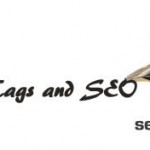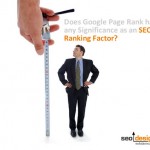As the tension mounts for SEO practitioners regarding the recent comments from Matt Cutts (head of the Google Web Spam Team) at SMX Advanced regarding the Google no-follow conundrum (to follow or not to follow) for internal page rank sculpting; many have noticed a trail of SERP fluctuations which lack continuity and coherence as a result of the ripple effect of this new metric.
The problem stems from the fact that the nofollow tag (originally devised from Google to prevent sites from being penalized from linking to other websites) was just that, a tool to protect your website from a penalty from linking to an untrusted websites or sites that could potentially be associated with a bad neighborhood.
Herein lies the problem, the double edged sword in this instance was, the no-follow tag was also later implemented in search engine optimization as a mechanism for page rank sculpting. Page rank sculpting is essentially using the “nofollow” tag or optimizing a series of links within the website to have the highest amount of efficiency. For example, links with the anchor text “click here” or off topic links which are used for human purposes (such as a log-in link or contact us) that has no real SEO value are also often no-followed in an attempt to preserve vital ranking factor to a website.
Links are a primary method that search engines use to determine the context of a page and how it fits into the overall site architecture when assessing relevance. Prior to this, by implementing the no-follow, you were essentially putting your best links forward to create the ideal link graph for your own website.
As a result, Google is suggesting that those who are implementing the nofollow tag excessively in this capacity to pass the most vital ranking factor from page to page in your own website may in fact be penalized or have that ranking factor “evaporate”. This is the same vital ranking factor which would have proportionately flowed to the other links in a higher percentage prior to the “upgrade to the algorithm” to offset capping one or a series of the links.
This implies that if you no-followed a link from every page in your navigation for instance which may have the anchor text “home” that this would essentially cut the ties with your homepage and arrest or “evaporate” the amount of link flow that was moving through that link.
Just for clarity, the real reason someone would use Page rank sculpting in this capacity is due to the fact that the word “home” is not the best descriptor for one of the most powerful pages in your website (the homepage). Your main keyword for example linked from the first 25-50 words of the body text would have a higher propensity of passing ranking factor with the keyword of your choice, which is why using the nofollow tag makes the most sense (to elect the preferred link).
Although I suspect the implications are far reaching and this is only the tip of the iceberg for what type of new update to the search algorithms weighting mechanism, the fallout is still impacting a variety of competitive verticals for websites who implement this technique.
Who is most likely to see results slip in the SERPs? (search engine result pages), essentially larger websites that lacked enough alternatives to provide a sufficient amount of anchor text or had more extraneous link to sculpt as the suppressed factors now become buoyant.
On a side note, Google’s stance suggests that they never intended “nofollow” to be used in that fashion (page rank sculpting) and it may be saying (this link is not trusted) which is why some argue that it should never have been used in this capacity. Obviously with so many rankings at stake for SEO who vested time, energy and effort into the process in order to function within the guidelines of Google, the argument now leaves many feeling misled.
Obviously transparency is the ultimate objective for such as colossal business as Google, but the entire concept of asking webmasters to implement no-follow (even in the capacity of linking out from their website to others instead of putting more man power into the algorithm) because their technology (at present) lacks the ability to distinguish a paid link from a non paid link could be considered a breach of that transparency.
So, the ultimate question is, to follow or not to follow? Will SEO’s continue using nofollow tags within a website as a means to sculpt link flow? or just go back to java or something less intrusive or capable of backfiring if the policy changes?
There is no doubt that we all love what Google brings to the table for each of our websites, which is traffic, consumers and revenue. But how can we expect to remain positive if changes that were suggested by such a company are changed or altered to embrace an entirely different problem (SPAM). Essentially, the freedom to link to whoever you want to for whatever reason should be something that no webmaster or blogger should live in fear of getting deindexed over.
Obviously the editorial policy of the freedom to link and the choice of applying the no-follow tag is what is on the table and each have their own respective consequence. But, should we all be forced to beat to the drum of a policy which would rather sweep SEO under the rug (since we challenge the premise of PPC) by optimizing websites for enhanced search engine traffic?
With so many questions, I can only speak for myself that I look forward to a rollback of how the search engine result pages looked before this unknown ripple started last week which has left the result pages in shambles and shifting faster than most data centers can keep up.
With so many skewed search results being affected by the link graph being shifted on the fly, who knows who will rank for what when the dust settles? With the advent of Bing making a debut, this does leave the Big G vulnerable for businesses to jump ship (if their rankings dip) in a hope to salvage business and relevant search engine traffic?
All that we can say at this point is, wait for official word about the new roll out of how the no follow tag will apply for internal linking purposes. Meanwhile organic SEO and the SERPs as we know it hangs in the balance.
Hopefully, some level of stability will return and we can get back to business. As a user/searcher, we all hope that the changes implemented are induced to promote the most relevant results. However, if the most recent changes in the algorithm have produced this increase in relevancy is yet to be seen or what impact it will have on existing websites employing the no-follow tag.
Although it may be too early to tell, at least SEO’s and others will be more cautious in the future about shifting their practices in reference to no follow or canonical tags or any other suggested tactics suggested from search engines. At least until they can ascertain that those metrics will not be used in reverse or shifted when the technology evolves.












Your site is excellent. Do you think that the potential from losing page rank if using internal no follows affects overall internal link strategy? For instance, if it’s a matter with page rank of “use it or lose it,” would one still be inclined to no follow low value user/search pages like Terms, Privacy, etc. I know Google likes to see some of these but why waste the crawl cycles. Could there be other instances where you either will change your internal linking approach to manage your page rank, or just leave it be random, or as it appears, let Google determine this.
Thanks.
Hi Rick:
To answer your question,I think it is too early to see what real impact this has. At this point its all about testing, testing and testing some more.
In a perfect world, we could just omit using a keyword altogether by using an image without an alt to pass link flow but not a negative shingle, or go old java could come in handy again.
I concur with your logic, use multiple variables on a larger scale (in the place of nofollow) or resort to using robots.txt for blocking link flow or at least good old javascript (on) click code /format.
I am sure there will be chatter about this topic for the next few weeks, in the meantime, perhaps its time to run some beta testing to get a firm grip on what happens when you perform some split testing.
All the best….
Jeffrey
Another thought/question related to this. In reading earlier notes on the Google Algo, it said since pagerank is in effect “leaked” when you do off site links, external links should be kept to a minimum. It also said that putting these links from as few pages as possible was preferred. Conversely, I have read (and I think you noted something like this as well) that external links to authoritative sources increase your authority via theme relevancy. In what situations do you think each of these are true?
And given the above, even without retaining page rank by using no follow (if the current page rank/no follow changes are true), wouldn’t it be wise to no follow external links to avoid “leaking” your existing page rank?
For example, We’re redoing some websites right now where we have many links for users to download say a flash player and was trying to decide whether to no follow them or not.